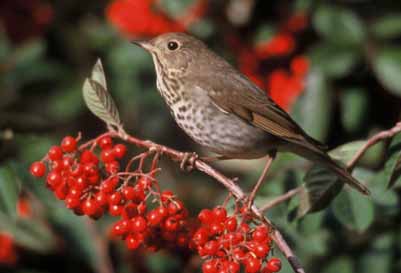Interior Forest
|
Barred Owl, Red-shouldered Hawk, Hairy Woodpecker, Pileated Woodpecker, Eastern Wood-Pewee, Scarlet Tanager, Red-eyed Vireo, Blue-headed Vireo, Black & White Warbler, Northern Parula, Black-throated Blue Warbler, Black-throated Green Warbler, Blackburnian Warbler, Ovenbird, Northern Waterthrush, Louisiana Waterthrush, Canada Warbler, Hermit Thrush, Wood Thrush, Swainson’s Thrush, Veery
|
Generally require mature forest and appear to either require a relatively large forest patch within which to live, or they occur in higher densities or have higher reproductive success in larger forest patches.
In Vermont this group appears to have stable distributions; the number of species exhibiting block gains and losses are nearly equal, and the average proportion of blocks gained and lost, by species, differ little.
Total area of forest in Vermont has changed little, but forests have matured, benefitting species such as Pileated Woodpecker, Barred Owl, Hermit Thrush, Black-throated Green Warbler, Northern Parula, and Blue-headed Vireo.
A variety of potential reasons may be behind declines in block occupancy of some species, including changes in habitat structure, changes in forest composition, and forest fragmentation.







